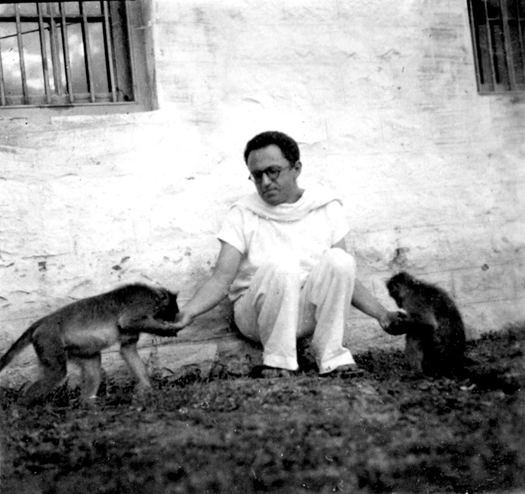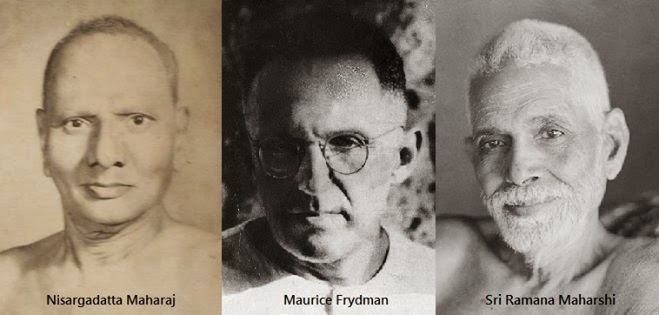Name Maurice Frydman | ||
 | ||
Maurice frydman au bal
Maurice Frydman (Maurycy Frydman or Maurycy Frydman-Mor in Polish), aka Swami Bharatananda (1901 in Warsaw, Russian Empire – 9 March 1977 in India), was an engineer and humanitarian who spent the later part of his life in India. He lived at the ashram of Mahatma Gandhi and took an active part in India's fight for independence—notably in helping to draft a new constitution for the State of Aundh that became the Aundh Experiment. He was a Polish Jew who subsequently converted to Hinduism.
Contents

Biography

Frydman came to India in the late 1930s as a Jewish refugee from Warsaw. A successful capitalist, he was managing director of the Mysore State Government Electrical Factory in Bangalore. Eventually he was won over by Hindu philosophy and became a sannyasi. Frydman was instrumental, along with Gandhi and the Raja of Aundh, in helping to draft the November Declaration, which handed over rule of the state of Aundh from the Raja to the residents in 1938-9.

He became acquainted with one of the sons of the Raja of Aundh, and was well regarded by the Raja himself. According to the Raja's son, Apa Pant, "Frydman had great influence with my father, and on his seventy-fifth birthday he said, 'Raja Saheb, why don't you go and make a declaration to Mahatma Gandhi that you are giving all power to the people because it will help in the freedom struggle.'"

As a sympathiser with the Indian independence movement, the Raja accepted this idea. Frydman wrote a draft declaration, and the Raja and his son, Apa Pant, travelled to see Gandhi in Wardha, where the Mahatma drew up a new constitution for the state. The constitution, which gave full responsible government to the people of Aundh, was adopted on 21 January 1939. This "Aundh Experiment" was a rare event in pre-independence India, where the rulers of princely states were generally reluctant to give up their power. After some initial hesitation among the populace of the state it proved to be very successful, lasting until the merger of the princely states into India in 1948.

While in India, Frydman became a disciple of Mahatma Gandhi and lived in his ashram, where he made the spinning wheel that Gandhi himself used. Frydman used his engineering skill to create several new types of spinning wheels for Gandhi, which piqued his interest in finding the most efficient and economical spinning wheel for India.
He was close to Nehru, and was associated with Sri Ramana Maharshi and J. Krishnamurti.
A longtime friend to Advaita guru, Nisargadatta Maharaj, who considered him a Jnani, Maurice Frydman died in 1977 in India, with Sri Nisargadatta by his bedside. Frydman edited and translated Nisargadatta Maharaj's tape-recorded conversations into the English-language book I Am That, published in 1973.
Frydman helped Wanda Dynowska, a Polish theosophist who came to India in the 1930s, to establish a Polish-Indian Library (Biblioteka Polsko-Indyjska). The library holds a collection of books aimed "to show India to Poland and Poland to India", containing translations from Indian languages to Polish and from Polish to English. During the 2nd World War he helped with the transfer of Polish orphans from Siberia, displaced there by the Soviets after their annexation of Eastern Poland to Siberia in 1939-1941. They were moved from Siberia via Iran (with the Polish army of Gen. Władysław Anders) mainly to India, Kenya and New Zealand. After 1959 he helped Wanda Dynowska with Tibetan refugees in India.
